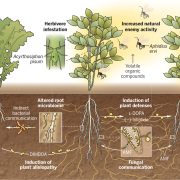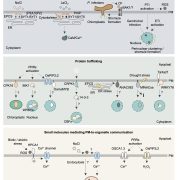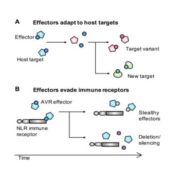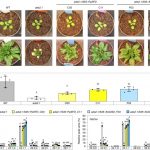Experimental evidence of microbial inheritance in plants and transmission routes from seed to phyllosphere and root (Environ. Microbiol.)
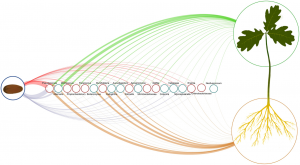 All plant species are associated with a diverse yet distinct assemblage of microorganisms known as the microbiome. Traditionally, the environment is considered the primary source of these microbes. However, Abdelfattah and colleagues’ fascinating research shows that seeds can act as vehicles to share microorganisms between plant generations. Quercus robur acorns were grown in sterile conditions in a novel device that prevented microbial exchange between above- and below organs, ensuring seeds were the only source of microorganisms and each part’s microbiome could develop independently. Once germinated, the phyllosphere and root microbiome were sequenced using fungal ITS and bacterial 16S rDNA sequences and compared to those of the embryo and the pericarp. The embryo and the phyllosphere had very similar microbiomes, while the pericarp and the root had distinct and less diverse microbial communities. For instance, while several genera were shared between organs, they exhibited significant differences in their relative abundances. As a result, this research provides fascinating evidence of the vertical transmission (between generations) of microbial assemblages in plants. Moreover, it illustrates that after germination, the microbes associated with the seed diverge and form distinct communities related to each organ. (Summary by Carlos A. Ordóñez-Parra @caordonezparra) Environ. Microbiol. 10.1111/1462-2920.15392
All plant species are associated with a diverse yet distinct assemblage of microorganisms known as the microbiome. Traditionally, the environment is considered the primary source of these microbes. However, Abdelfattah and colleagues’ fascinating research shows that seeds can act as vehicles to share microorganisms between plant generations. Quercus robur acorns were grown in sterile conditions in a novel device that prevented microbial exchange between above- and below organs, ensuring seeds were the only source of microorganisms and each part’s microbiome could develop independently. Once germinated, the phyllosphere and root microbiome were sequenced using fungal ITS and bacterial 16S rDNA sequences and compared to those of the embryo and the pericarp. The embryo and the phyllosphere had very similar microbiomes, while the pericarp and the root had distinct and less diverse microbial communities. For instance, while several genera were shared between organs, they exhibited significant differences in their relative abundances. As a result, this research provides fascinating evidence of the vertical transmission (between generations) of microbial assemblages in plants. Moreover, it illustrates that after germination, the microbes associated with the seed diverge and form distinct communities related to each organ. (Summary by Carlos A. Ordóñez-Parra @caordonezparra) Environ. Microbiol. 10.1111/1462-2920.15392


